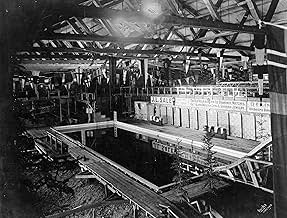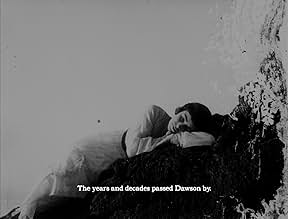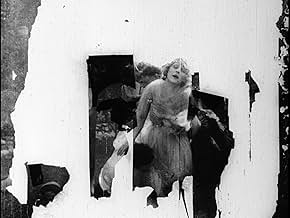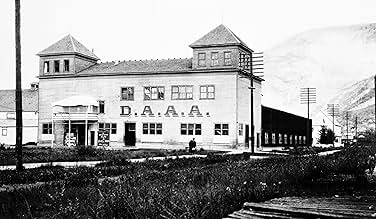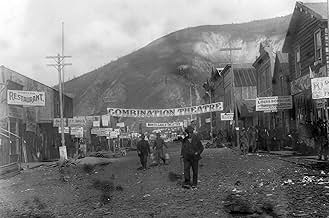IMDb RATING
7.5/10
2.3K
YOUR RATING
The history of Dawson City, the gold rush town that had a historical treasure of forgotten silent films buried in permafrost for decades until 1978.The history of Dawson City, the gold rush town that had a historical treasure of forgotten silent films buried in permafrost for decades until 1978.The history of Dawson City, the gold rush town that had a historical treasure of forgotten silent films buried in permafrost for decades until 1978.
- Awards
- 5 wins & 17 nominations total
Roscoe 'Fatty' Arbuckle
- Self
- (archive footage)
Frank Barrett
- Self
- (archive footage)
Alexander Berkman
- Self
- (archive footage)
Charles Chaplin
- Self as The Lone Prospector
- (archive footage)
Eddie Cicotte
- Self
- (archive footage)
Pat Duncan
- Self
- (archive footage)
Thomas A. Edison
- Self
- (archive footage)
Chick Gandil
- Self
- (archive footage)
Chief Isaac of the Tr'ondek Hwech'in Klondike Han
- Self
- (archive footage)
Larry Kopf
- Self
- (archive footage)
Kenesaw M. Landis
- Self
- (archive footage)
- (as Kenesaw Mountain Landis)
Auguste Lumière
- Self
- (archive footage)
Louis Lumière
- Self
- (archive footage)
Mary Miles Minter
- Self
- (archive footage)
Bill Morrison
- Self
- (archive footage)
- Director
- Writer
- All cast & crew
- Production, box office & more at IMDbPro
Featured reviews
This is a fascinating documentary that weaves together the story of the Klondike gold rush, the early history of silent cinema, the flammability of early celluloid film spools, and the mystery of the excavation of old reels in the site of a buried former swimming pool in Dawson City, Yukon Territory. Dawson was the end of the line for hundreds of silent films that crossed North America. Once they were shown in the local theater, they just piled up in warehouses in Dawson. Most canisters were thrown in the river or burned in fires, but some got buried and miraculously preserved in an oxygen-free environment and were able to restored. Bill Morrison, who spent years painstakingly putting this film together made some key choices: he showed pieces of over 100 long-lost films, mostly without narration but with captions identifying each film and its year, along with a haunting soundtrack by musicians from the Icelandic band, Sigur Rós. The clips from the 1919 "Black Sox" World Series were especially interesting to me.
I had the opportunity to see the film at the National Gallery of Art, and Mr. Morrison was there to answer questions. He mentioned that in the cache that was unearthed there were pieces of over 500 films, although no full-length feature films. (Who knew there were that many silent films in circulation?) He said he chose to eschew narration, because, after all, these were silent films. Someone in the audience asked him if he had heard of a similar cache more recently found in New Zealand. He said he had, and explained that New Zealand was similar in that it was a terminus point in the globe for such movies as well. Thanks to Mr Morrison, and a little luck, this history has not been lost forever.
I had the opportunity to see the film at the National Gallery of Art, and Mr. Morrison was there to answer questions. He mentioned that in the cache that was unearthed there were pieces of over 500 films, although no full-length feature films. (Who knew there were that many silent films in circulation?) He said he chose to eschew narration, because, after all, these were silent films. Someone in the audience asked him if he had heard of a similar cache more recently found in New Zealand. He said he had, and explained that New Zealand was similar in that it was a terminus point in the globe for such movies as well. Thanks to Mr Morrison, and a little luck, this history has not been lost forever.
At first, I thought this was an okay film.10 minutes later I thought it was very good. 10 minutes after that, I realized it was excellent. The pace is slow, deliberate, and has more than its share of "Holy cow!" moments. Be patient as there's a huge story that needs to be told and it has a cast of thousands. Using old movie footage (from films both preserved in Hollywood and "found" in Dawson City) and interviews with some of the people "who were there", Bill Morrison has crafted a big story of a small town in a very big world with history playing out all around it.
An extraordinary piece of documentary film-making. Bravo!
An extraordinary piece of documentary film-making. Bravo!
Dawson City, British Columbia is a place where dreams began and dreams ended. Located about 350 miles south of the Arctic Circle, Dawson City was established in 1896 with 3,500 residents and was home to the native Hän speaking people who lived along the Yukon River, harvesting salmon and hunting caribou. As boatloads of gold prospectors arrived from San Francisco and Seattle in 1897, the Native Americans were forced off their land and "relocated" to Klondike City. What happened in between the city's heady gold rush days and its demise has been documented by Bill Morrison ("The Great Flood") in his fascinating film Dawson City: Frozen Time.
Rescued from 533 nitrate reels of film buried for decades beneath an ice rink in Dawson City, Morrison put together a treasure trove of silent films, newsreels, travelogues, and sports footage spanning from 1897 until the 1970s, films once thought lost forever. There is no narration in the film, only subtitles flashed on the screen as unobtrusively as possible along with an insistent score by Alex Somers ("Captain Fantastic"), but it is the images that tell an American story of the connection between money, politics, and entertainment, a connection that brought fame and wealth to some and obscurity to others.
Among the names we recognize who stayed at one time or another in Dawson City were Hän Chief Isaac, Jack London, Fred Trump (Donald's grandfather), Eric Hegg as well as Sid Grauman, Tex Rickard, Klondike Kate, Alexander Pantages, Philadelphia Jack O'Brien, Fatty Arbuckle, Daniel and Solomon Guggenheim, Robert Service, and William Desmond Taylor, names that later became famous in Hollywood. Though the discovery and restoration of the buried reels by Yukon historians Michael Gates and Kathy Jones-Gates took place in 1978, it was not until 2013 that Morrison met with Paul Gordon, film conservator for Library and Archives Canada who agreed to share the collection with a wider audience.
Through the magic of the silent films, we see images of the city turned into a haven for adventurers seeking gold and entertainments in brothels, gambling halls, and theaters. Among the titles bearing witness were "The Frog," "The Birth of a Flower," "A Trip Through Palestine," "The Recoil," and "Polly of the Circus." Even more revealing of the old mindset are such titles as "The Half Breed," "The Female of the Species," "The Hidden Scar," and "The Unpardonable Sin." We see the discovery of gold in Nome, Alaska in 1899 which siphoned off a chunk of Dawson City's population, the end of gambling and prostitution in 1901, and the building of the DAAA, the Dawson Amateur Athletic Association in 1902.
The DAAA was an entertainment center that included a swimming pool, a hockey rink, billiards, boxing and handball and which began showing films that had been brought to Dawson City after having been in circulation for several years. For the reels of film, this was the end of the line. Too dangerous and expensive to return, seventy five percent of the films were lost in fires, purposely burned, or thrown in the Yukon River. The remainder was dumped in the DAAA pool by an employee of the Canadian Bank of Commerce which managed the films.
The burial was made in order to smooth out the ice rink and the reels remained packed in permafrost for fifty years. It was these that were found in 1978, many of them well preserved under the ice, others in various states of decay. In the clips, some that only last a few seconds, Morrison demonstrates through visual poetry how the patterns of deterioration can add themselves to the beauty of the experience.
Among the discoveries was footage of the rigged 1919 World Series, the series commonly known for the infamous Black Sox scandal which Morrison unfortunately seems to justify by pointing out that the players were bound to one team (Reserve Clause) and could not use their performance on the diamond to increase their earnings.
Dawson City: Frozen Time is also not without politically relevant material. Newsreel footage is shown of the 1914 Ludlow Massacre in Colorado where 24 of the 1200 miners on strike against the Colorado Fuel and Iron Company owned by John D. Rockefeller were gunned down by the Colorado National Guard. Judge Kenesaw Mountain Landis, the first baseball commissioner hired to prevent any more Black Sox scandals, used his power to deport socialists who protested World War I and the murder of the miners in Colorado. There is also footage of a black protest parade, and some few words of choice from the corrupt Mayor of New York, Jimmy Walker.
Dawson City: Frozen Time is a snapshot in time of a people thinking big and taking risks, some sadly at the expense of those who had lived there for thousands of years. It is a reminder of an age that has passed, but one whose ramifications have not.
Rescued from 533 nitrate reels of film buried for decades beneath an ice rink in Dawson City, Morrison put together a treasure trove of silent films, newsreels, travelogues, and sports footage spanning from 1897 until the 1970s, films once thought lost forever. There is no narration in the film, only subtitles flashed on the screen as unobtrusively as possible along with an insistent score by Alex Somers ("Captain Fantastic"), but it is the images that tell an American story of the connection between money, politics, and entertainment, a connection that brought fame and wealth to some and obscurity to others.
Among the names we recognize who stayed at one time or another in Dawson City were Hän Chief Isaac, Jack London, Fred Trump (Donald's grandfather), Eric Hegg as well as Sid Grauman, Tex Rickard, Klondike Kate, Alexander Pantages, Philadelphia Jack O'Brien, Fatty Arbuckle, Daniel and Solomon Guggenheim, Robert Service, and William Desmond Taylor, names that later became famous in Hollywood. Though the discovery and restoration of the buried reels by Yukon historians Michael Gates and Kathy Jones-Gates took place in 1978, it was not until 2013 that Morrison met with Paul Gordon, film conservator for Library and Archives Canada who agreed to share the collection with a wider audience.
Through the magic of the silent films, we see images of the city turned into a haven for adventurers seeking gold and entertainments in brothels, gambling halls, and theaters. Among the titles bearing witness were "The Frog," "The Birth of a Flower," "A Trip Through Palestine," "The Recoil," and "Polly of the Circus." Even more revealing of the old mindset are such titles as "The Half Breed," "The Female of the Species," "The Hidden Scar," and "The Unpardonable Sin." We see the discovery of gold in Nome, Alaska in 1899 which siphoned off a chunk of Dawson City's population, the end of gambling and prostitution in 1901, and the building of the DAAA, the Dawson Amateur Athletic Association in 1902.
The DAAA was an entertainment center that included a swimming pool, a hockey rink, billiards, boxing and handball and which began showing films that had been brought to Dawson City after having been in circulation for several years. For the reels of film, this was the end of the line. Too dangerous and expensive to return, seventy five percent of the films were lost in fires, purposely burned, or thrown in the Yukon River. The remainder was dumped in the DAAA pool by an employee of the Canadian Bank of Commerce which managed the films.
The burial was made in order to smooth out the ice rink and the reels remained packed in permafrost for fifty years. It was these that were found in 1978, many of them well preserved under the ice, others in various states of decay. In the clips, some that only last a few seconds, Morrison demonstrates through visual poetry how the patterns of deterioration can add themselves to the beauty of the experience.
Among the discoveries was footage of the rigged 1919 World Series, the series commonly known for the infamous Black Sox scandal which Morrison unfortunately seems to justify by pointing out that the players were bound to one team (Reserve Clause) and could not use their performance on the diamond to increase their earnings.
Dawson City: Frozen Time is also not without politically relevant material. Newsreel footage is shown of the 1914 Ludlow Massacre in Colorado where 24 of the 1200 miners on strike against the Colorado Fuel and Iron Company owned by John D. Rockefeller were gunned down by the Colorado National Guard. Judge Kenesaw Mountain Landis, the first baseball commissioner hired to prevent any more Black Sox scandals, used his power to deport socialists who protested World War I and the murder of the miners in Colorado. There is also footage of a black protest parade, and some few words of choice from the corrupt Mayor of New York, Jimmy Walker.
Dawson City: Frozen Time is a snapshot in time of a people thinking big and taking risks, some sadly at the expense of those who had lived there for thousands of years. It is a reminder of an age that has passed, but one whose ramifications have not.
If you like this sort of thing...
Photographs and snippets of film from the late 1890s lead to a wonderful series of films of very tough/hard people who encountered their own Bitcoin bubble in the shape of the Klondike gold rush.
And there are some very interesting names in the history of this little gold rush town.
It's a matter of taste but I am fascinated by films of long dead people who once thought they were at the forefront of civilization. Old time photos are good for imaginings, but films of people going about their business causes a lot more 'connectedness' between the viewer and the subjects.
"I know someone who acts just like that!"
We are presented with photos and film footage that makes one think "Deadwood" probably wasn't really such an exaggeration.
Bill Morrison, the director and writer of Dawson City Frozen Time, is my new hero. Through an odd set of circumstances he landed at the National Archives in Canada and learned about the stash of silent films discovered as part of a landfill site in the Yukon. Early films were made on highly flammable celluloid, and in a new industry (the first film was in 1895 in France) creating an archive was definitely not considered. So, discovering over 500 "lost" silent films from the early 1900's was like discovering gold all over again. (A gold rush was how the city of Dawson initially came into being !!) Mr. Morrison has woven together the story of silent film, the Klondike gold rush and the creation of a city. If you have the opportunity to see this film, please do so. I expect it is going to win a few awards !!
Did you know
- TriviaThe film contains rare footage of the 1919 World Series - known for the Black Sox betting scandal.
- ConnectionsFeatures Le débarquement du congrès de photographie à Lyon (1895)
- SoundtracksFlutter
(uncredited)
Written and Produced by Alex Somers
Performed by Alex Somers,Birgir Jón Birgisson , Edda Rún Ólafsdóttir, Hildur Ársælsdóttir, María Huld Markan Sigfúsdóttir, Samuli Kosminen and Sólrún Sumarliðadóttir
Mastered by Taylor Deupree
Krunk
- How long is Dawson City: Frozen Time?Powered by Alexa
Details
Box office
- Gross US & Canada
- $132,369
- Gross worldwide
- $132,369
- Runtime
- 2h(120 min)
- Color
- Aspect ratio
- 1.33 : 1
Contribute to this page
Suggest an edit or add missing content



